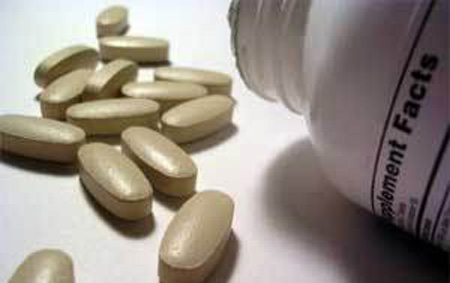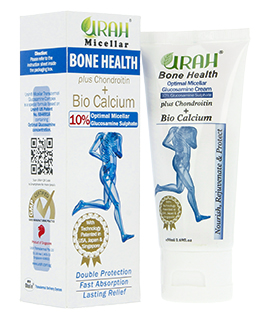
RESEARCH PAPER 1:
Reference: British Medical Journal (BMJ) 2010;341:c4675 doi:10.1136/bmj.c4675
Title: Effects of glucosamine, chondroitin, or placebo in patients with osteoarthritis of hip or knee: network meta-analysis
Authors: Simon Wandel, research fellow,1,2 Peter Ju'ni, professor and head of division,1,2 Britta Tendal, research fellow,3 Eveline Nu'esch, research fellow,1,2 Peter M Villiger, director,4 NickyJ Welton, senior research fellow,5 Stephan Reichenbach, senior research fellow,1,4 Sven Trelle, senior research fellow1,2
1.Institute of Social and Preventive Medicine, University of Bern, Switzerland
2.CTU Bern, Bern University Hospital, Switzerland
3.Nordic Cochrane Centre, Righospitalet, Copenhagen, Denmark
4.Department of Rheumatology, Clinical Immunology, and Allergology, Bern University Hospital, Switzerland
5.Academic Unit of Primary Health Care, Department of Community Based Medicine, University of Bristol, Bristol, United Kingdom
Correspondence to: P Juni, Institute of Social and Preventive Medicine, University of Bern, Switzerland juni@ispm.unibe.ch
ABSTRACT
Objective: To determine the effect of glucosamine, chondroitin, or the two in combination on joint pain and on radiological progression of disease in osteoarthritis of the hip or knee.
Design: Network meta-analysis. Direct comparisons within trials were combined with indirect evidence from other trials by using a Bayesian model that allowed the synthesis of multiple time points. Main outcome measure Pain intensity. Secondary outcome was change in minimal width of joint space. The minimal clinically important difference between preparations and placebo was prespecified at -0.9 cm on a 10 cm visual analogue scale.
Results :10 trials in 3803 patients were included. On a 10 cm visual analogue scale the overall difference in pain intensity compared with placebo was -0.4 cm (95% credible interval -0.7 to -0.1 cm) for glucosamine, -0.3 cm (-0.7 to 0.0 cm) for chondroitin, and -0.5 cm (-0.9 to 0.0 cm) for the combination. For none of the estimates did the 95% credible intervals cross the boundary of the minimal clinically important difference. Industry independent trials showed smaller effects than commercially funded trials (P=0.02 for interaction). The differences in changes in minimal width of joint space were all minute, with 95% credible intervals overlapping zero.
Conclusions
Compared with placebo, glucosamine, chondroitin, and their combination do not reduce joint pain or have an impact on narrowing of joint space. Health authorities and health insurers should not cover the costs of these preparations, and new prescriptions to patients who have not received treatment should be discouraged.
RESEARCH PAPER 2:
Journal: N Engl J Med 2006; 354:795-808; February 23, 2006
Title: Glucosamine, Chondroitin Sulfate, and the Two in Combination for Painful Knee Osteoarthritis
Authors: Daniel O. Clegg, M.D., Domenic J. Reda, Ph.D. et al.
Methods
We randomly assigned 1583 patients with symptomatic knee osteoarthritis to receive 1500 mg of glucosamine daily, 1200 mg of chondroitin sulfate daily, both glucosamine and chondroitin sulfate, 200 mg of celecoxib daily, or placebo for 24 weeks. Up to 4000 mg of acetaminophen daily was allowed as rescue analgesia. Assignment was stratified according to the severity of knee pain (mild [N=1229] vs. moderate to severe [N=354]). The primary outcome measure was a 20 percent decrease in knee pain from baseline to week 24.
Results
The mean age of the patients was 59 years, and 64 percent were women. Overall, glucosamine and chondroitin sulfate were not significantly better than placebo in reducing knee pain by 20 percent. As compared with the rate of response to placebo (60.1 percent), the rate of response to glucosamine was 3.9 percentage points higher (P=0.30), the rate of response to chondroitin sulfate was 5.3 percentage points higher (P=0.17), and the rate of response to combined treatment was 6.5 percentage points higher (P=0.09). The rate of response in the celecoxib control group was 10.0 percentage points higher than that in the placebo control group (P=0.008). For patients with moderate-to-severe pain at baseline, the rate of response was significantly higher with combined therapy than with placebo (79.2 percent vs. 54.3 percent, P=0.002). Adverse events were mild, infrequent, and evenly distributed among the groups.
Conclusions
Glucosamine and chondroitin sulfate alone or in combination did not reduce pain effectively in the overall group of patients with osteoarthritis of the knee. Exploratory analyses suggest that the combination of glucosamine and chondroitin sulfate may be effective in the subgroup of patients with moderate-to-severe knee pain. (ClinicalTrials.gov number, NCT00032890.)
RESEARCH PAPER 3:
Journal: Osteoarthritis and Cartilage (2010) 18, 297-302
©2009 Osteoarthritis Research Society International. Published by Elsevier Ltd. All rights reserved. doi:10.1016/j.joca.2009.10.013
Title: The human pharmacokinetics of oral ingestion of glucosamine and chondroitin sulfate taken separately or in combination
C. G. Jacksonya, A. H. Plaasza, J. D. Sandyz*, C. Huax, S. Kim-Rolandsx, J. G. Barnhillk, C. L. Harrisk and D. O. Cleggy University of Utah School of Medicine, Salt Lake City, UT, USA; Rush University Medical Center, Chicago IL, USA
*Department of Internal Medicine, College of Medicine, University of South Florida, Tampa, FL, USA k Albuquerque VA Cooperative Studies Program Clinical Research Pharmacy Coordinating Center, Albuquerque, NM, USA, University of New Mexico College of Pharmacy, Albuquerque, NM, USA
SummaryObjective:
As part of the National Institutes of Health (NIH)-sponsored Glucosamine/Chondroitin sulfate Arthritis Intervention Trial (GAIT) our objective here was to examine (1) the pharmacokinetics (PK) of glucosamine (GlcN) and chondroitin sulfate (CS) when taken separately or in combination as a single dose in normal individuals (n 1/4 29) and (2) the PK of GlcN and CS when taken as a single dose after 3 months daily dosing with GlcN, CS or GlcN CS, in patients with symptomatic knee pain (n 1/4 28).Methods: The concentration of GlcN in the circulation was determined by established fluorophore-assisted carbohydrate electrophoresis (FACE) methods. The hydrodynamic size and disaccharide composition of CS chains in the circulation and dosage samples was determined by Superose 6 chromatography and FACE.
Results:
We show that circulating levels of CS in human plasma are about 20 g/ml. Most significantly, the endogenous concentration and CS disaccharide composition were not detectably altered by ingestion of CS, when the CS was taken alone or in combination with GlcN. On the other hand, the Cmax (single-dose study) and AUC values (multiple-dose study) for ingested GlcN were significantly reduced by combination dosing with CS, relative to GlcN dosing alone.
Conclusions:
We conclude that pain relief perceived following ingestion of CS probably does not depend on simultaneous or prior intake of GlcN. Further, such effects on joint pain, if present, probably do not result from ingested CS reaching the joint space but may result from changes in cellular activities in the gut lining or in the liver, where concentrations of ingested CS, or its breakdown products, could be substantially elevated following oral ingestion. Moreover, since combined dosing of GlcN with CS was found to reduce the plasma levels seen with GlcN dosing alone, any improved pain relief by combination dosing cannot be explained by higher circulating concentrations of GlcN.
2009 Osteoarthritis Research Society International. Published by Elsevier Ltd. All rights reserved.Key words: Osteoarthritis, Chondroitin sulfate, Pharmacokinetics, Glucosamine, Therapeutics.
RESEARCH PAPER 4:
Journal: ARTHRITIS & RHEUMATISM Vol. 52, No. 1, January 2005, pp 181-191 DOI 10.1002/art.20762
© 2005, American College of RheumatologySynovial Fluid Levels and Serum Pharmacokinetics in aLarge
Title: Animal Model Following Treatment With Oral Glucosamine at Clinically Relevant Doses
Sheila Laverty, John D. Sandy, Christophe Celeste, Pascal Vachon, Jean-Francois Marier, and Anna H. K. Plaas
Objective.
To examine the concentration of glucosamine in the synovial fluid and its pharmacokinetics in serum in a large animal model following dosing with glucosamine HCl at clinically relevant levels.
Methods.
Eight adult female horses were studied. After an overnight fast, glucosamine HCl (20 mg/kg of body weight) was administered by either nasogastric (NG) intubation or intravenous (IV) injection. Blood samples were collected before dosing and at 5, 15, 30, 60, 120, 180, 240, 360, 480, and 720 minutes after dosing. Synovial fluid samples were collected from the radiocarpal joints 48 hours before dosing and at 1 and 12 hours after dosing. Glucosamine was assayed by fluorophoreassisted carbohydrate electrophoresis.
Results.
The maximum concentration of glucosamine in serum reached 300 pM (50 g/ml) following IV dosing and 6 pM (1 g/ml) following NG dosing. Synovial fluid concentrations reached 9-15 pM with IV dosing and 0.3-0.7 pM with NG dosing, and remained elevated (range 0.1-0.7 pM) in most animals even at 12 hours after dosing. Following NG dosing, the median serum maximal concentration of 6.1 pM (range 4.38-7.58) was attained between 30 minutes and 4 hours postdose. The mean apparent volume of distribution was 15.4 liters/kg, the mean bioavailability was 5.9%, and the mean elimination half-life was 2.82 hours.
Conclusion.
Clinically relevant dosing of glucosamine HCl in this large monogastric animal model results in serum and synovial fluid concentrations that are at least 500-fold lower than those reported to modify chondrocyte anabolic and catabolic activities in tissue and cell culture experiments. We conclude that the apparent therapeutic benefit of dietary glucosamine on pain and joint space width in humans and animals may be secondary to its effects on nonarticular tissues, such as the intestinal lining, liver, or kidney, since these may be exposed to much high levels of glucosamine following ingestion.
Click here to Check the Best Product for your Pain Condition
Click here for Urah users testimonies
Click here to Check the Quality of your Glucosamine Product before use

2025 © URAH Transdermal Pte Ltd. ALL Rights Reserved. Urah Privacy Policy | Terms of Service | Return Policy
Disclaimer: All contents on this website are provided for general information only, and should not be treated as a substitute for the medical advice of your Physician or any other health care professional. Urah is not responsible or liable for any diagnosis made by any user based on the content of this website. Always consult your own Physician if you're in any way concerned about your health. Urah Micellar Transdermal Cream formulae are not patented or under any patent rights.